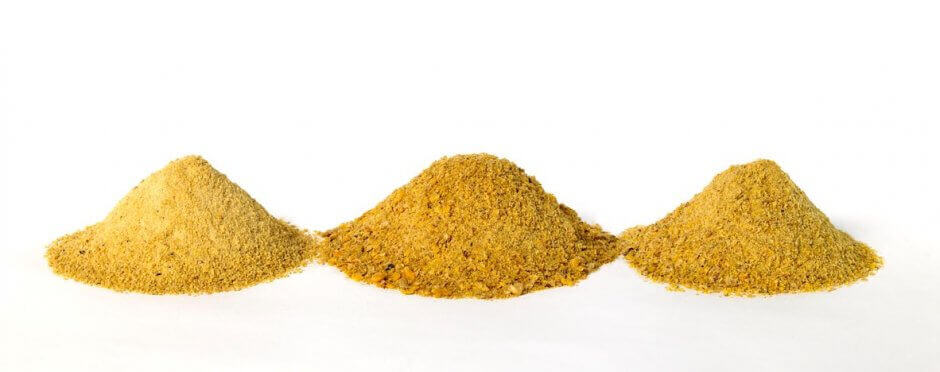Bridging the Gap Between Commodity and Synthetic Ingredients with High Shear Dry Extrusion

One of the goals of animal nutrition feeding programs is to balance the need for growth performance and economics by selecting from a list of available ingredients – each with specific nutrient characteristics (some of which are important and nearly impossible to know) and costs.
The protein portion of a diet is the most expensive component per unit mass (energy is the most expensive in absolute terms), so a lot of effort has gone into determining the quality of proteins in ingredients, often by measuring amino acid digestibility. Of the amino acids, lysine limits the amount of protein that animal tissues can construct. What this means practically is that one of the building blocks of proteins is not sufficiently available, tissue growth is slowed, and weight gain per time period declines.
I’ve discussed in a previous blog the utilization of synthetic lysine as an ingredient to increase protein deposition – typical when a normal diet formulation with soy meal is deficient in lysine. And, as the data from this study shows, using synthetic lysine to overcome a deficiency is a better way to increase whole body protein in pigs than by increasing the amount of commodity, solvent-extracted soybean meal (SBM).

You can see a direct, linear relationship between adding synthetic lysine to a deficient swine diet and increasing body protein deposition. Lysine is clearly the limiting factor in this particular diet, and as indicated above, this is a normal situation. Adding more of the commodity, solvent-extracted SBM to the formulation also improves body protein deposition, but in a less predictable way.
There are many reasons for this difference, not the least of which is that lysine within SBM must be released through digestion and absorption, while synthetic lysine only needs to be absorbed and make its way to the tissues for protein building.
However, in order to make proteins, all of the amino acids need be there – hence, you can’t just feed more and more synthetic lysine to make more and more protein. That’s where complete proteins, like SBM, enter the picture.
The question becomes, how best to improve things along this spectrum between usage of commodity, solvent-extracted SBM and synthetic lysine? The answer is to use a better soy meal.
Look no further than dry extruded/mechanically oil pressed (ExPress®) soy meal. ExPress® soy meal has higher amino acid digestibilities, including lysine, than the commodity, solvent-extracted SBM version. Therefore, this type of higher-quality soy meal will help you move away from the irregular protein deposition curve, shown above, and towards the linear, predictable curve based on synthetic lysine.
Speak with us about the benefits of using higher-quality, better-digested ingredients to enhance protein deposition.



